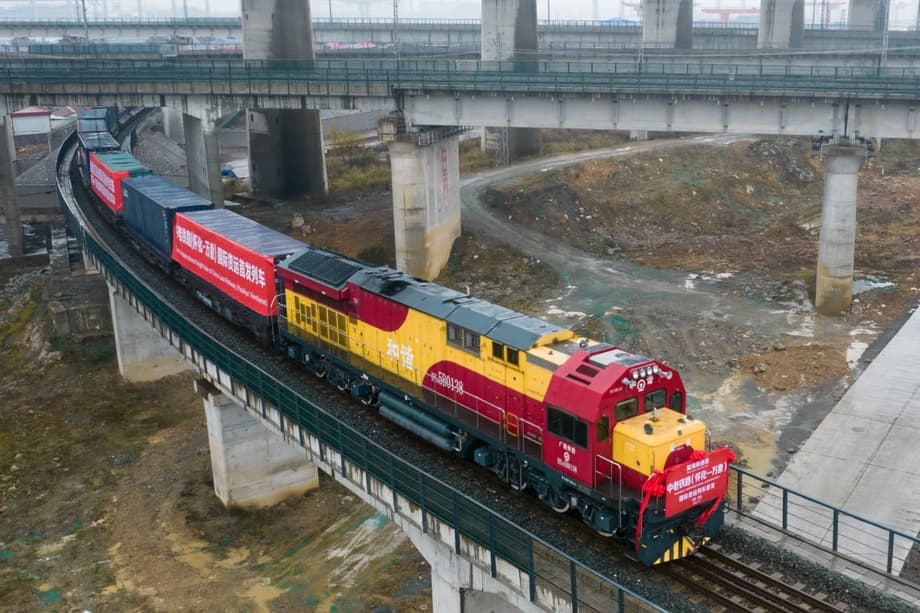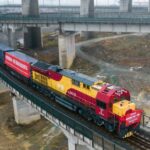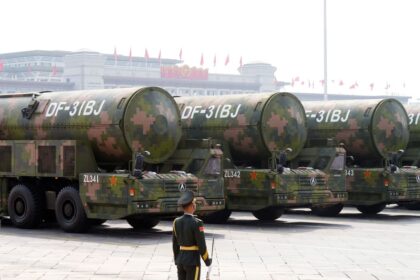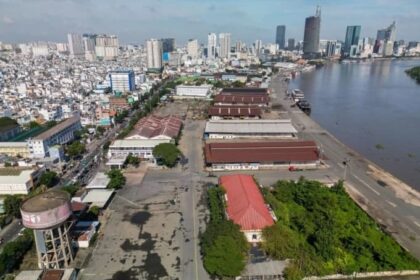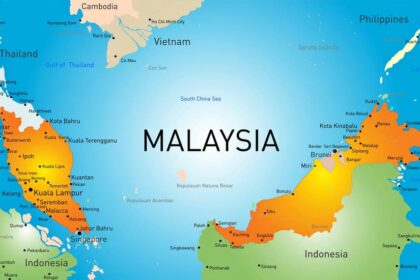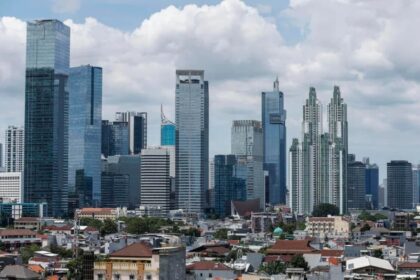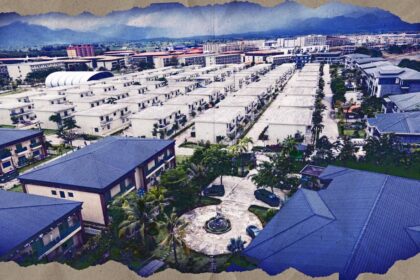A rail corridor turns into a resource lifeline
A railway built to knit China and Laos closer together has become a resource lifeline with global reach. Stretching from Kunming in southwest China to Vientiane, the Laotian capital, the 1,035 kilometer China Laos Railway was designed for passengers and freight at speeds up to 200 kilometers per hour. Four years after trains began to run, a new Chinese government study says the line has quietly turned into a crucial conduit for potassium, the core ingredient in potash fertiliser. That matters for food security in the worlds second largest economy and for the price and power dynamics in global trade.
Potash is central to modern farming. China produces vast quantities of rice, corn, vegetables and fruit, yet it has limited domestic potassium. The country holds less than 4 percent of global potassium reserves and most of that is locked in salt lakes that are costly to exploit. For decades China depended on imports, primarily from North America and from producers in Eastern Europe. Supply shocks, sanctions and rising transport costs made fertiliser one of the most sensitive links in Chinas food chain. With the artery through Laos now moving increasing volumes of potassium chloride, China has a fresh route that reduces its exposure to distant suppliers and maritime chokepoints. The shift also gives Beijing more confidence in negotiations with Western producers.
The railway is doing more than moving ore. Cross border operations expanded after pandemic travel restrictions eased in 2023, with two daily passenger services and busy freight schedules. By mid 2024, traffic on the line had carried more than 10 million tons of goods with a value of roughly 5.7 billion dollars. For Laos, the track is a first true national line. For China, it is a new onramp into Southeast Asia and a direct line to mineral deposits that once looked too distant to exploit quickly at scale.
For potassium, the effect is straightforward. Before the line opened, shipments from central and southern Laos relied on trucks that crawled over mountain roads to reach borders or ports. Today, bulk rail cars can load near mine sites, transfer through the Thanaleng Dry Port outside Vientiane and move straight into Chinas standard gauge network. Transit times are shorter and schedules are predictable. That predictability is strategic when the commodity keeps crops healthy and yields high.
Why potassium matters to China
Potassium sits with nitrogen and phosphorus in the NPK trio that underpins crop nutrition. It helps plants move water, activate enzymes and build stronger stalks. Fields short on potassium suffer weaker disease resistance and lower yields, especially during heat or drought. In a country that feeds 1.4 billion people, stable access to potassium is not a detail. It is a hedge against weather volatility and supply risk.
What potash is and how farmers use it
Most potash used in fields is potassium chloride, known in the trade as muriate of potash. It is mined as ore or extracted from subsurface brines, then processed into granules for spreading or blending into compound fertilisers. Some crops benefit from potassium sulfate, a premium product with less chloride, and industry uses potassium hydroxide in chemicals, soaps and some batteries. The common thread is that modern food systems depend on a steady stream of potassium salts.
A market shaped by shocks
Global supply is concentrated. Canada dominates exports. Russia and Belarus hold large reserves and have long been key suppliers. Sanctions and war in Eastern Europe tightened shipments and pushed up prices in recent years, while higher energy costs lifted production expenses. For China, which already lacked domestic potassium, the shock underscored a simple risk. A long supply chain for a strategic farm input is a weak spot. The Laos rail link is a direct response. It lowers logistics costs, trims weeks from delivery schedules compared with ocean shipping, and brings a new, nearby source into the mix.
Laos potential and constraints
Laos has set an ambition to become a regional potash supplier. Officials see the rail line as a way to convert a landlocked position into a regional hub. With sanctions curbing supplies from Eastern Europe, Chinese buyers have turned to Laos, and exports of potassium chloride have climbed. Industry claims point to very large deposits of potassium rich salts under Laotian soil, and authorities promote gradual capacity growth as new mines come online and existing projects scale up.
That vision faces hurdles. The national balance sheet is fragile, the currency has lost value, and inflation has strained households. The railway itself cost about 5.9 billion dollars, with most financing coming from China. Public debt is heavy, and by 2023 roughly half of the governments external sovereign debt was owed to Chinese creditors. The shape of future investment and the terms of debt relief will influence how quickly Laos can build a competitive potash industry that benefits local communities.
Licences, standards and local value add
Authorities have pushed for better regulation of the mineral sector and for more processing inside Laos before export. Many companies have been authorised to mine and process potash, yet only about half have secured full licences and are active at scale. Firms face capital needs, technical gaps and regulatory compliance tasks, which slow the ramp up of output. The policy goal is clear, raise standards, add value domestically and capture more revenue from each tonne that leaves the country.
Environment and community concerns
Potash extraction can involve solution mining and large evaporation ponds, which require careful water management to avoid leaks or contamination. Mines can disturb land and bring heavy truck traffic to rural areas. The railway reduces road pressure, but noise and dust around stations and depots still affect nearby residents. Planners also face a shortage of skilled workers for rail operations. Managing these pressures will shape public support for projects and determine whether the industry grows responsibly.
How the rail changes costs and routes
Bulk commodities like potash are tailor made for rail. They are heavy, low value per kilogram and shipped in large volumes. Before 2021, most Laotian minerals moved by truck to borders or ports, then over sea lanes. The China Laos Railway flips that logic. Trains load near mines, pass through the Thanaleng Dry Port, and roll straight into Yunnan. At the border, customs processing is integrated and the line uses standard gauge track that matches the Chinese network, which removes a costly break of gauge.
Academic work tracking satellite images and trade data shows railways can cut trade costs, spark new urban activity near stations and pull investment into connected corridors. In Laos, early evidence points to stronger development within a short distance of stations, where logistics parks, warehouses and small factories cluster. The effect is uneven and depends on local economic base and capacity, yet the pattern is consistent. Rail makes it cheaper to move goods and that encourages new business formation.
A quick look at cost drivers
Rail moves tens of thousands of tonnes per train over long distances. Fixed costs are high, but per tonne costs drop as volumes rise. Schedules are reliable and insensitive to weather compared with mountain roads. The Laos line also solves an old friction point by linking directly into China, so potash can pass through in a single logistics chain from mine to fertiliser plant. That reduces inventory needs for buyers and smooths cash flow for sellers.
Thailand and Malaysia plug in to the corridor
Regional links are catching up. Thailand is building its section of a fast rail network that will connect Bangkok to Nong Khai on the border with Laos. Construction on the first phase to Nakhon Ratchasima is moving ahead, and authorities have approved the extension to Nong Khai. A logistics facility there will connect Thailands meter gauge tracks with the standard gauge used by the China Laos Railway. Officials describe it as a one stop service for trucks and trains moving cargo between the two systems.
Thai government spokesman Jirayu Houngsub explained the plan at a recent briefing, calling the Nong Khai site a bridge between different rail standards that should make freight handoffs smoother.
It will offer a one stop service for cargo transfer and help link Thailands meter gauge network with the standard gauge used on the China Laos line.
South of Thailand, Laos and Malaysia have agreed to cooperate on a rail sea route that ties the Thanaleng Dry Port to Penang Port and other facilities on the Malay Peninsula. The aim is to give exporters in Laos, and importers in China, an efficient path to deep water ports in the Strait of Malacca.
Sakhone Philangam, managing director of the Thanaleng Dry Port, described why the partnership matters for a small economy that needs higher throughput to cut costs.
We do not have that volume, so this partnership will enable us to tap into a larger logistics network.
Azman Shah Mohd Yusof, chief executive of MMC Port Holdings, said the cooperation fits regional plans to reduce transit time and improve logistics performance.
This will reduce transit times and logistics costs, improve supply chain efficiency and support growth across ASEAN markets.
These links, once fully operational, will give miners and traders multiple routes. Potash can head north into China, swing west to Thai markets or move south to Malaysian ports for wider distribution. Greater choice strengthens the business case for new investment along the corridor.
Geopolitics and bargaining power
China has long depended on distant suppliers for a commodity it cannot produce in sufficient quantity. The Laos line narrows that gap. When more potassium travels by rail from nearby deposits, Beijing has a stronger hand in negotiating prices with North American producers and others. It is not a full substitute for Canadian output, which remains dominant, but it is a credible alternative source that cuts the risk of sudden shortages.
For Western capitals and commodity traders, this shift reduces the leverage that supply disruptions once created. Price spikes in potash radiate through food markets and into household budgets. A steady flow from Laos means more resilience for Chinese agriculture and fewer flashpoints in trade disputes tied to fertiliser.
For Laos, the balance is more complex. Chinese companies and lenders now hold large claims on the countrys future cash flows. Chinese firms have opened more than twenty law offices in Laos in recent years to serve energy, infrastructure and mining clients, a sign of rising long term engagement. That brings expertise and deal flow, yet it also raises questions about regulatory capacity and national autonomy. Without clearer debt relief or stronger fiscal buffers, Laos remains exposed to external shocks even as new revenue arrives from minerals and logistics.
What to watch next
The next phase of this story will be written in freight yards and mine sites. Watch the pace of new mining licences and processing plants in Laos and whether more production happens locally before export. Track the Thai construction timeline and the rollout of the Nong Khai logistics hub that will connect the two rail standards. Follow the performance of the rail sea route with Malaysian ports and whether shippers actually shift cargo to those paths. Look for environmental monitoring and community engagement around potash projects, a key test of whether growth is sustainable. Finally, keep an eye on potash prices and the return of any supply from Russia and Belarus. If global volumes rise and prices cool, cost advantages from the Laos route will become even more important for keeping mines profitable and fertiliser affordable.
Key Points
- The China Laos Railway has become a reliable channel for potassium shipments that support Chinas food security.
- China holds less than 4 percent of global potassium reserves and has long depended on imports.
- Rail logistics from Laos reduce delivery time and costs versus truck and sea, improving supply resilience.
- Laos is scaling up potash mining and exports to China as sanctions curbed supplies from Eastern Europe.
- Laos faces debt stress, currency pressure and regulatory gaps even as mineral exports rise.
- Studies find rail corridors cut trade costs and spur development near stations in Laos.
- Thailand is building a link to Nong Khai with a planned logistics hub to connect meter and standard gauge tracks.
- Laos and Malaysia set up cooperation to link the Thanaleng Dry Port with Penang Port for a rail sea route.
- China gains bargaining power in potash negotiations by adding a nearby supply route.
- Environmental management, community impacts and workforce skills remain critical tests for long term success.


